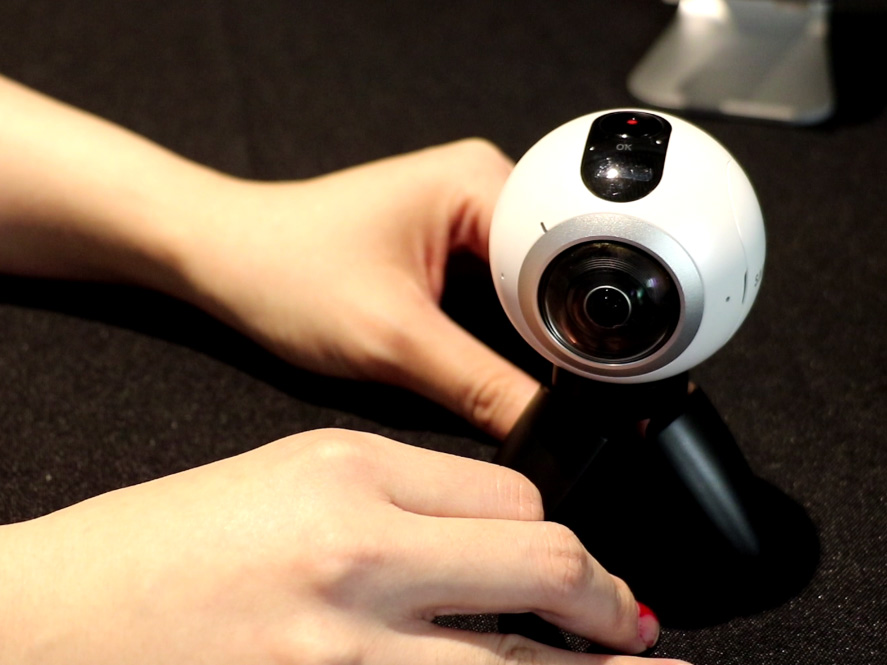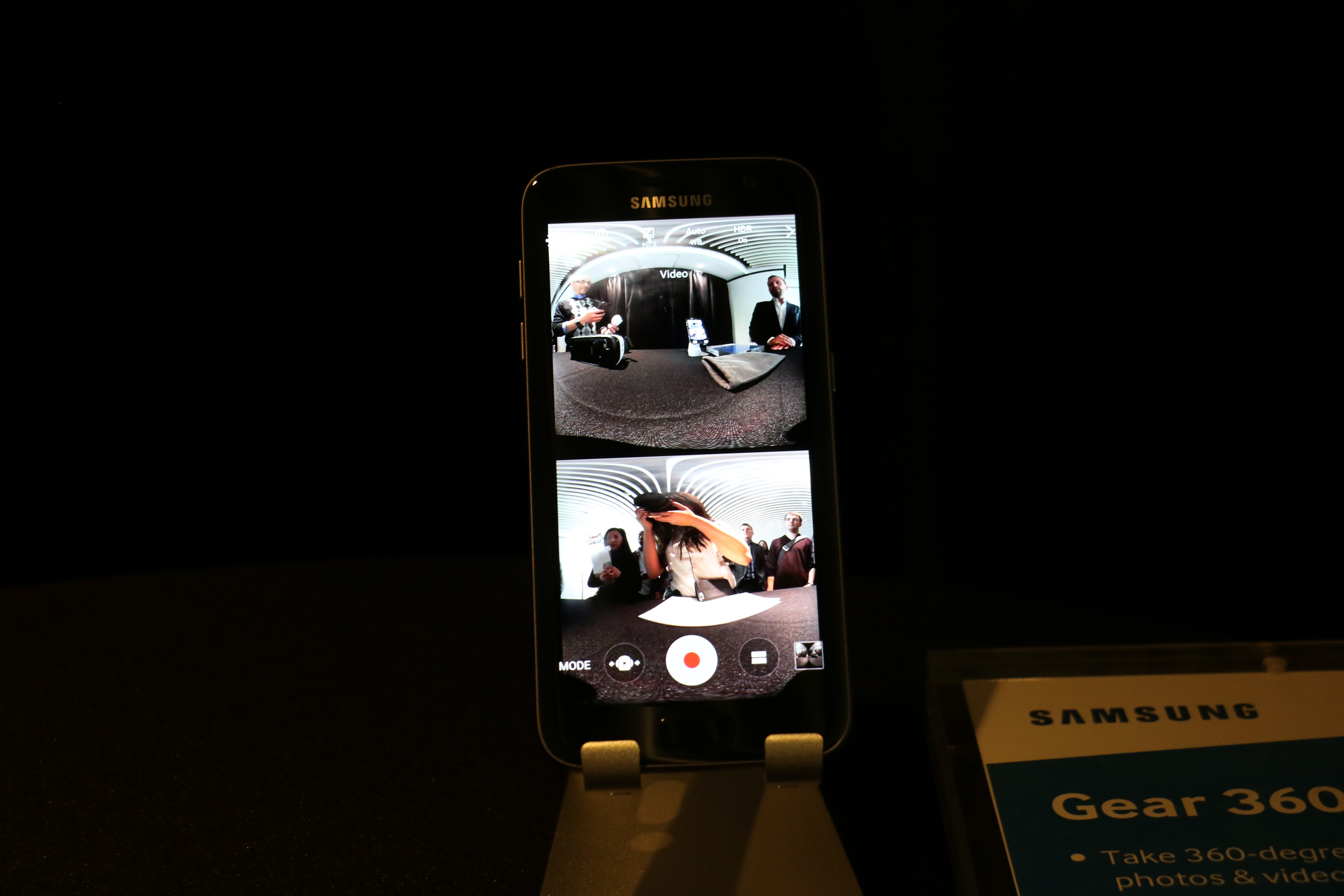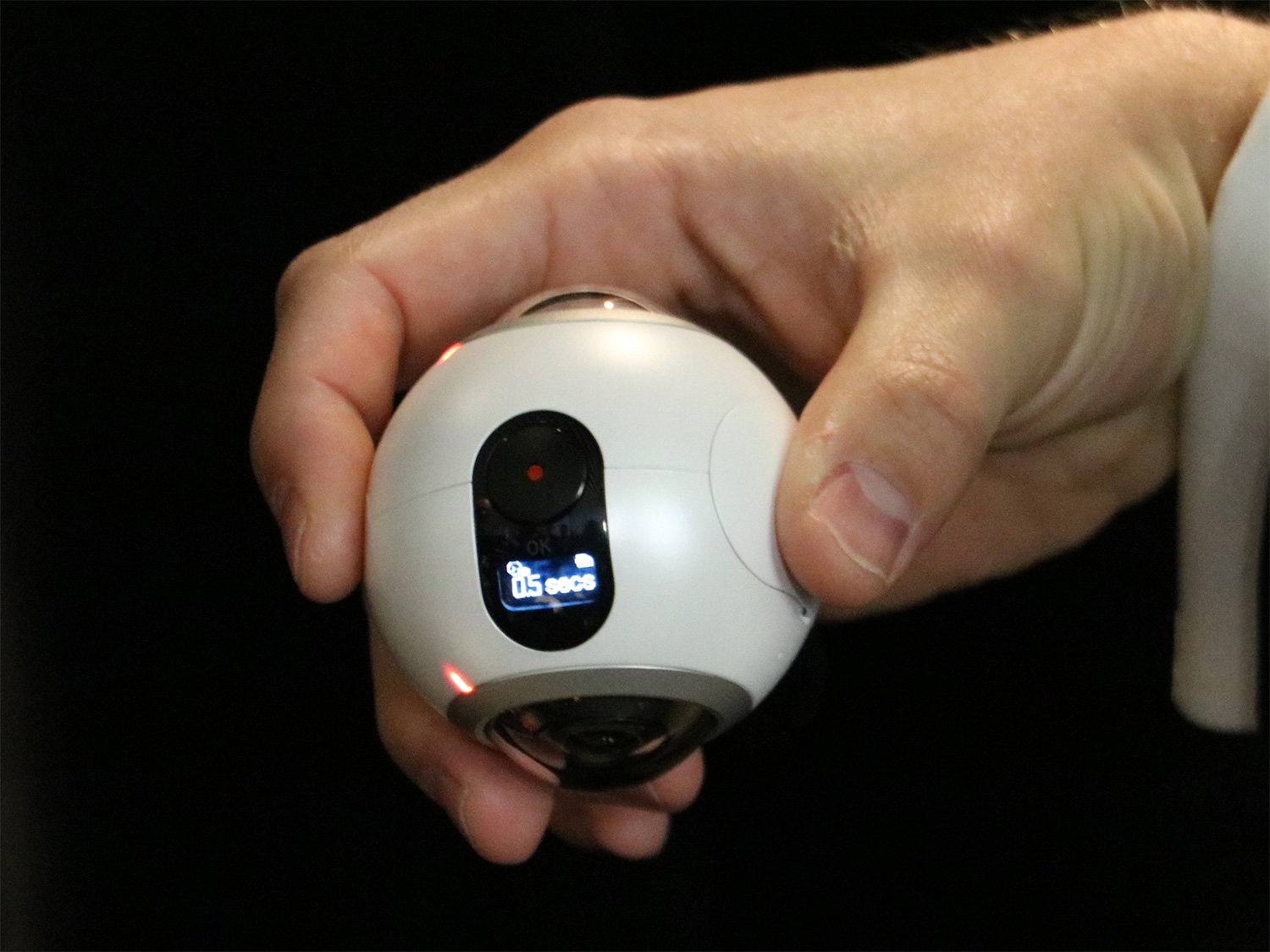Gear 360 Camera Hands-on: VR Selfies for All
With its high-res quality and compact design, the Samsung Gear 360 could make taking VR selfies the next big thing.
Get ready for a whole new world of selfies. Samsung today (Feb. 21) took the wraps off its Gear 360 virtual reality camera that takes high-res 360-degree pictures and videos that you can view and share. Expected to launch in Q2 of this year for an undisclosed price, the Gear 360 could go a long way in helping the masses make VR content.
The dainty, spherical shooter is made up of two 15-megapixel cameras that each record a 195-degree field of view, and then stitch together the footage in the companion handset to create a 360-degree, immersive image. At launch, the Gear 360 will only be compatible with the Gear S7 and S7 Edge, as well as a selection of Galaxy devices that have yet to be announced.
MORE: Galaxy S7 and S7 Edge: What We Like, What We Don't
The solid little 5.4-ounce ball sat comfortably in my hand, and the accompanying tripod (which comes with the camera) felt sturdy. On a Gear VR headset, the sample video and picture of a snowy ski jump that Samsung showed us looked sharp, and I didn't notice any tearing or black spots in my surroundings. There was also depth to the image, which helped me determine near and far objects, as opposed to a simple flat 360-degree canvas.

You can shoot in four modes: Photo, Video, Time Lapse and Video Loop. Recording and sharing a high-res 360-degree video or picture is as easy as starting the companion app, connecting the the camera, and then hitting the shutter button. Everything around the camera is captured simultaneously, and during recording or playback, you can drag around the scene to see all 360 degrees of the image.
Content is recorded to the camera's onboard microSD card, and can be sent to its companion smartphone via Wi-Fi Direct, Bluetooth or a microUSB cable connection. The Gear 360's app lets you share your finished product to YouTube or Facebook, both of which support VR content.
During our demo, the transmission between the Gear 360 and its connected S7 Edge was smooth and speedy. We only had to wait a few seconds for the phone to process the video, but depending on the phone you're using, this processing could take longer.

Each camera on the Gear 360 has an f/2.0 fisheye lens and can shoot up to 30-megapixel still images and 3840 x 1920 videos at 30 frames per second. A button at the top lets lets you start recording with a push and rotate through modes, while a 0.5-inch LED display below that shows camera information. You can also shoot remotely via the smartphone app, which lets you control such settings as ISO light sensitivity, exposure, white balance and wind cut.

A universal mount on the bottom lets you attach it to any compatible tripod or accessory, and Samsung will be launching additional peripherals later this year. The Gear 360's removable battery is expected to provide up to 140 minutes of use (but not continuous recording), while its IP53 dust and water resistance means you can take it poolside without worry.
Samsung is by no means the first to produce a 360-degree camera, but it is the most well-known brand so far to do so. Traditional camera makers, such as Nikon, Kodak and Ricoh (Pentax), have already released their own versions, if not second iterations, of such cameras.
Startups such as Giroptic, Centr and VSN Mobil have also been on the scene for years, and Google even enables consumers to create VR content with existing smartphones through its Cardboard camera app. Despite the numerous products in the market, though, 360-degree or VR cameras have yet to really take off.
Pricing is a large unknown right now that could determine the Gear 360's success. Samsung's existing Gear VR headset retails for a very reasonable $99, so we expect the 360 to be competitively priced. With Samsung bringing VR cameras and accessories to the masses, we'll likely be bombarded by 360-degree selfies very soon.
Sign up to get the BEST of Tom's Guide direct to your inbox.
Get instant access to breaking news, the hottest reviews, great deals and helpful tips.
Cherlynn is Deputy Editor, Reviews at Engadget and also leads the site's Google reporting. She graduated with a Master’s in Journalism from Columbia University before joining Tom's Guide and its sister site LaptopMag as a staff writer, where she covered wearables, cameras, laptops, computers and smartphones, among many other subjects.

